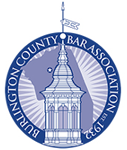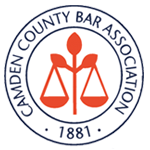Even the strongest people can injure their backs when lifting heavy items, whether it be at work, home, or play. That painful twinge can be feel shocking when it happens and can be indicative of a minor strain, a very serious injury, or something in between. The Bureau of Labor Statistics has reported that overexertion from lifting injuries accounts for more than 30 percent of workers’ compensation claims each year, and out of these, about 80 percent are workers in private industry. The Occupational Safety and Health Administration (OSHA) shares similar concerning statistics, claiming that lifting heavy objects is a leading cause of workplace injuries. They show that approximately 36 percent of all work-related injuries are back or shoulder trauma from heavy lifting.
Which Jobs Are Risky for Heavy Lifting Injuries?
Practically any employee working at any job could experience a bad heavy lifting injury. For example, an administrative assistant at a small company might have to move a heavy box of office supplies up to a high shelf for storage, or a truck driver could fracture his spine when dropping a heavy pallet. Certain workers are more likely to experience heavy lifting injuries, and these include those truck drivers, nursing assistants, construction personnel, laborers, and people who work in retail and warehouses. This makes a lot of sense when you think about the daily job responsibilities that these workers have:
- Loading and unloading materials from trucks
- Lifting and removing items from forklifts
- Lifting, stocking inventory items, and stacking boxes
- Assisting heavy patients with walking, getting up, sitting down, and moving them to gurneys and beds
- Pushing patients around in wheelchairs
- Operating equipment and heavy machinery
- Carrying around heavy construction materials
- Lifting other heavy items such as furniture and filled trash cans
A heavy lifting injury can happen the first time someone attempts to pick up a large item if they have a preexisting condition or when they lift something in the wrong way. If an employee lifts heavy items on a regular basis without taking breaks or must hold them for an extended amount of time, this also puts the worker at higher risk for an injury.
What Are My Risk Factors for a Heavy Lifting Injury?
Anyone who does not remember to use safe lifting practices puts themselves at risk for a heavy lifting injury. Employers and employees should both be aware of the right way to lift heavy items and train and reinforce the methods often. Although lifting heavy things is part of many people’s job responsibilities, so is doing it correctly, and the first rule for lifting something heavy is to maintain the right posture.
Although bending the back might seem like the natural way to lift something, this places extra pressure on your spine. Instead, bend at the knees while keeping your back straight and do not lean toward the right or left. Hold the object close to your body and lift straight up. It should not be supported by only one body part such as a shoulder or arm, because this uneven pressure can also hurt your spine. An improper handhold can also cause a heavy lifting injury, plus the item could get dropped on your leg or foot. If the object is too heavy, seek help from a coworker or use a forklift.
You could also be at higher risk for a heavy lifting injury if you are not wearing the right shoes and gloves. Non-skid soles are important because if you slip while holding something heavy, it could cause real damage. A good pair of work gloves will also allow you to have a better grip on whatever you are holding. If you have concerns about lifting something heavy or your back is beginning to ache, speak to a supervisor. Ignoring the pain is unwise because if you continue working with an injury, it could develop into something much worse.
What about Repetitive Stress Injuries?
Carpal tunnel syndrome is a common type of repetitive stress injury that affects workers in other ways and is caused by a pinched nerve in the wrist. Repetitive stress injuries from constant heavy lifting include torn shoulder rotator cuffs, herniated disks, and epicondylitis in the elbow. These can develop over time when workers are always lifting patients, carrying heavy objects, performing assembly line work, or performing tasks such as loading and unloading pallets day after day.
One way to avoid these injuries is to take frequent rest breaks or for employees to rotate their tasks with other workers. Slowing down the pace a bit can also help, as can frequent stretching of the muscles. It can be more challenging to claim repetitive stress injuries on workers’ compensation claims, as they may not be apparent to the naked eye so employers and insurers may question them. Something like a more obvious fractured vertebrae might be easier to claim.
Can I Claim a Heavy Lifting Injury on Workers’ Compensation?
The answer is yes, although obtaining the monetary benefits could be challenging. Like other states, New Jersey has a no-fault workers’ compensation program that abides by state laws. Injured workers do not have to prove that anyone, including the employer, was at fault to receive benefits. However, it is not unusual for companies and their insurance providers to challenge employee benefit claims. The employer might assert that the injury is not that serious or that it is not work related.
It is important to note that not all heavy lifting injuries hurt the back. You might end up with a neck injury; shoulder injury; or a knee, elbow, wrist, ankle, or foot injury. Whether it is serious or a slight pain that will not go away, do not make light of it. With a sudden onset of pain or workplace accident, get a supervisor to the site as soon as possible and note if there are any witnesses. Should you need to make a workers’ compensation claim, you will have to follow your employer’s policy for doing so.
The employer must be notified as soon as possible, as there can be statutes of limitations for making work-related claims. You will also need to fill out the appropriate paperwork and may need to use physicians who participate in the employer’s plan. There must be medical confirmation of the work-related injury within a specified time frame as well.
What if My Workers’ Compensation Claim Is Denied?
Having to face significant pain, high medical bills, and being unable to work is bad enough, but if the employer and/or insurance carrier denies the claim, it can cause serious problems. When this happens in New Jersey, employees have the option to file an Application for an Informal Hearing or a formal Claim Petition with the state’s Division of Workers’ Compensation. Once that is done, the case should get assigned to a judge and district office in the injured worker’s county of residence.
The Division will want to determine if the injury or illness is work related, the medical treatment that was or is being administered, and the compensability of the claim. Claimants can also seek permanent disability benefits, and families can seek dependency benefits when there is an alleged job-related fatality. The workers’ compensation insurance provider will most likely initiate a legal defense on behalf of the employer. Injured employers can file these applications and petitions on their own, but in most cases they will use a lawyer to represent them.
Cherry Hill Workers’ Compensation Lawyers at Pietras Saracino Smith & Meeks, LLP, Help Injured Employees Who Are Denied Their Benefits
If you were injured in any type of work-related incident and are facing challenges with your workers’ compensation claim, the Cherry Hill workers’ compensation lawyers at Pietras Saracino Smith & Meeks, LLP, can help. We will investigate the cause of your accident and fight to secure the compensation for which you are entitled. Call us today at 856-761-3773 or contact us online to schedule a free consultation. Located in Cherry Hill, New Jersey, we serve clients in Camden, Cinnaminson, Delran, Maple Shade, Pennsauken, and throughout South Jersey.













